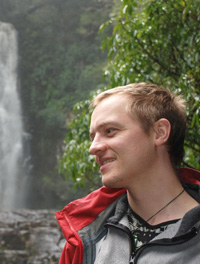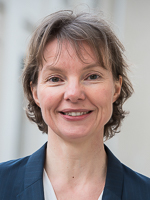Associate professor Bastiaan Star (partner)
Faculty of Mathematics and Natural Sciences, Centre for Ecological and Evolutionary Synthesis
Project: 4OCEANS: Human History of Marine Life: Extraction, Knowledge, Drivers & Consumption of Marine Resources, c.100 BCE to c.1860 CE
Summary
Duration: Start date: 2021-07-01, End date: 2027-06-30
Call: ERC-SyG-2020
Participating organisations: Trinity College Dublin, Poul Holm. Norges teknisk-Naturvitenskapelige Universitet, James Barrett. Universidade Nova de Lisboa, Maria Lan?a. Universitetet i Oslo, Bastiaan Star. Colombia University, Michael Puma.
Summary: 4-OCEANS aims to assess the importance of marine life for human societies during the last two millennia. We contend that the harvest of marine resources played a critical, but as yet underappreciated and poorly understood, role in global history. To bridge this gap in our understanding, the four PIs will form an interdisciplinary team combining expertise in marine environmental history, climate history, natural history, geography, historical ecology and zooarchaeology. We will examine when and where marine exploitation was of significance to human society; how selected major socio-economic, cultural, and environmental forces variously constrained and enabled marine exploitation; and identify the consequences of marine resource exploitation for societal development. Through these objectives we will discover how marine resources as novel wealth altered societies throughout history. How might marine wealth have enabled some societies to escape food shortages? How did it trigger long-term socio-economic impacts and ecological consequences? How were marine resources valued, consumed, and energetically transformed? Revealing this history will open a new window on human-nature dynamics of profound importance for understanding developmental trajectories of human societies. 4-OCEANS will transcend the binary distinctions of East and West, global-north and global-south, indigenous and colonial, resource exploitation and wildlife conservation, nature and culture. In doing so, 4-OCEANS will uncover and chart historical trajectories towards sustainable and unsustainable food security and resource extraction, identifying their complex underlying drivers.
Professor Unni Olsbye
Faculty of Mathematics and Natural Sciences, Department of Chemistry
Project: CUBE: Unravelling the secrets of Cu-based catalysts for C-H activation
Summary
Duration: Start date: 2020-04-01, End date: 2026-03-31
Call: ERC-SyG-2019
Participating organisations: Universitetet i Oslo, Unni Olsbye. Norges Milj?- og Biovitenskapelige universitet, Vincent Eijsink. Universita degli Studi di Torino, Silvia Bordiga. Max-Planck Gesellschaft zur Forderung der Wissenschaften EV, Serena deBeer.
Summary: The Holy Grail of selective C-H activation has been vigorously pursued for more than 70 years in all areas of catalysis - homogeneous, heterogeneous and biological - yet with scarce cross-fertilization. CUBE will bridge this gap, by synergistically disclosing the secrets of Cu-containing biological and synthetic catalysts and translating the acquired knowledge into rationally designed new catalysts with unprecedented activity, selectivity and turn-over numbers. CUBE will capitalize on the recent discovery of abundant and experimentally accessible natural enzymes (LPMOs) that activate resilient C-H bonds using a mono-Cu catalytic center, thus providing a biological analogue to synthetic Cu-zeolites. CUBE will also harness the potential of metal-organic frameworks (MOFs), which offer unprecedented (“enzyme-like”) flexibility in catalyst development. C-H activating Cu-containing Zr-MOFs have just been described. CUBE will generate trans-disciplinary insights into Cu-based catalysts to progress beyond the state of the art in C-H activation. To this aim, we will elucidate the key mechanistic features of oxidant activation by O2, as well as N2O and H2O2, and then C-H activation. Emerging design principles from these studies will evolve new catalysts, including engineered enzymes, enzyme-polymer hybrid materials, and MOFs. To enable these efforts, we will develop novel methodologies at the interface of spectroscopy and computational chemistry. The project brings together leading players in complementary fields: design, synthesis and testing of catalysts (UiO), enzymology and protein engineering (NMBU), spectroscopic investigations of heterogeneous catalysts (UoT) and spectroscopic/computational studies of homogeneous and biological catalysts (MPI). Through a work-plan conceived to maximize cross-fertilization within the project team, we will design and develop novel catalysts for tomorrow’s C-H activation chemistry.
Professor Mats Carlsson

Faculty of Mathematics and Natural Sciences, Institute of Theoretical Astrophysics
Project: WHOLE SUN, The Whole Sun Project: Untangling the complex physical mechanisms behind our eruptive star and its twins
Summary
Duration: Start date: 2019-05-01, End date: 2025-04-30
Call: ERC-SyG-2018
Participating organisations: Commisariat a l’Energie Atomique et aux Energies Alternatives, Allan Sacha Brun. Max Planck Institute for Solar System Research, Laurent Gizon. Universitetet i Oslo, Mats Carlsson. University of St. Andrews, Vasilis Archontis.
Summary: We live around an active magnetic star, our Sun, that has a direct impact on our technological society through its variability and eruptive behaviour. Despite decades of intense research, fundamental questions such as How does the Sun work? Why does it possess a magnetic cycle and a dynamic hot atmosphere and how they are interrelated? remain mostly unanswered. In the Whole Sun project, we aim at tackling these key questions as a coherent whole for the first time. For too many years, the Sun has been split into internal and external solar physics topics lacking a global integrated view of its complex plasma dynamics. For instance, dynamo simulations seeking to answer the origin of the magnetic field and of its cyclic behaviour neglect surface physics and the existence of sunspots and likewise surface models often assume the magnetic field as a given input without the detailed knowledge of the nonlinear interplay between convection, rotation and magnetic fields in the Sun’s outer envelope. The time has come to gather European world leading solar/stellar physicists to build a deeper understanding of our star and to extend it to its twins. To do so many bottlenecks must be addressed: highly disparate spatial and temporal scales, physical interfaces of all solar layers, complex microphysics and global effects, strong dynamics and how parameters such as star’s metallicity, mass and rotation influence the outcome. By gathering physicists from each side of the solar surface we aim at tackling these challenging, beyond the state-of-the-art problems, by developing a deep theoretical understanding of our star and of its analogues and by building the most advanced multiresolution solar code in order to jointly address global/macrophysics and local/microphysics aspects of the solar dynamics. The advent of Exa-scale computers makes such a challenge within our reach as do modern analysis methods to interpret observations and 4-D data cube that the project will produce or access.